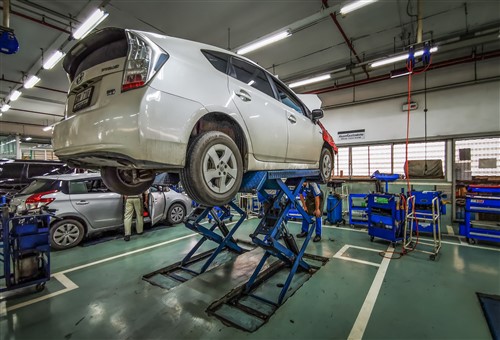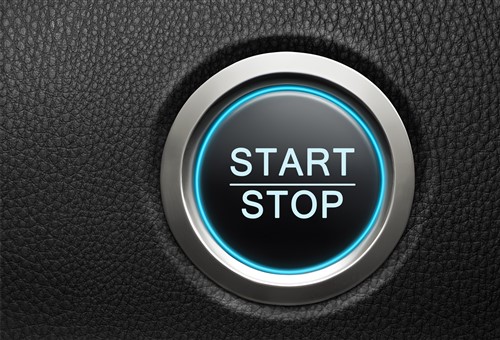
This writer was recently invited to consult on an ADAS recalibration failure on a high-end SUV when he happened to overhear two young technicians discussing their common dislike of hybrid vehicles in general, and fixing electrical issues on hybrids, in particular. We can skip over the finer details of this discussion but suffice to say that the gist of it was that neither hoped that the Toyota Prius that had just arrived at the workshop on the back of a recovery truck would be assigned to them.
It turned out that this Prius was suffering from a crank-no-start condition, and as it happened, the Prius was assigned to one of the young technicians who were hoping it would not be. The young technician was not pleased, but as this writer remarked to him at the time, it could have been far worse. He could have been assigned a late-model BMW with recurring premature spark plug failures or perhaps a high-end Mercedes-Benz with an intermittent misfire on two cylinders, so he should consider himself lucky because crank-no-start issues on Toyota hybrids are generally very easy to fix. Not everybody may agree with this, so in Part 1 of this two-part article, we will discuss some of the reasons why Toyota hybrids may not start sometimes, as well as provide some tips and tricks on how to diagnose and fix this condition. Before we get to specifics, though, let us look at-
In conventional vehicles, a driver turns the key or pushes a button, and the starter motor draws power from the battery to rotate the engine until it starts. We need not discuss the myriad complex intermediate steps various control modules take before allowing the engine to start here, but once the engine starts, it will typically keep on running* until the driver switches it off at the end of a trip.
* Excluding, of course, vehicles that are fitted with STOP and GO systems.
Hybrids work a little differently. For instance, on Toyota hybrids, the high-voltage battery pack (instead of the 12 auxiliary battery) supplies MG 2, (Motor/Generator 2) with power to crank the engine at 1 200 RPM. If you have not had much exposure to Toyota hybrids, and you hear say, a Prius engine cranking, you could be forgiven for thinking that the engine was running, when it is not. In fact, even experienced Toyota technicians sometimes find it difficult to distinguish between the exhaust note of a cranking Prius engine and that of a running Prius engine.
Moreover, the engines in Toyota hybrids do not run until they are switched off after a trip. The engines in these vehicles shut off and restart at many points during a trip, but when and how often they start depends on the demand for power, which in turn, depends on (among other things) the high voltage battery’s states of charge and health.
In practice, this has caused many first-time owners to complain that their cars just suddenly lost power and died on them unexpectedly. In one case that this writer was involved with, the owner of a brand new Prius sold the car after owning it for only three days because as they said at the time, they could not trust a car whose engine dies all the time.
To the best of his recollection, this customer complained that many warning lights came on just as the car lost power unexpectedly. It restarted, so they drove on for a few hundred metres before it died again. This time, however, they could not start it again, and since this writer's establishment was closest to where the new Prius died, the customer had the car delivered to us on the back of a recovery truck.
So, given that Toyota engines typically do not just die without a very good reason, this writer "took a look" and found the root cause of the problem within about three seconds. According to the fuel gauge the car was out of fuel, but the situation was little more complicated than a lack of fuel, so here is what happened-
Although the engine died the first time due to a lack of fuel, it probably started again because the fuel pick-up must have picked up some fuel sloshing around in the tank, but this would not have been enough to fuel the engine for more than a few seconds, at best. Nonetheless, the distance the car drove must have been on battery power, so when the engine died for the second time, the customer cranked the engine until the battery management system shut the high-voltage system down to prevent the battery pack from draining to below a minimum threshold. It is worth noting that the first-generation Prius cars did not have this feature; on these cars, it was possible to crank the engine until the high-voltage battery died.
In the case under discussion, though, the act of shutting down the high-voltage system set trouble code P0A0F – “Engine Failed to Start”, but clearing this code will usually (but not always) allow one or maybe two attempts to start the engine. Thus, we put some fuel into the tank, cleared the code and the Prius started almost immediately.
However, despite incontrovertible evidence that the problem was caused by a simple lack of fuel, the customer refused to have anything further to do with the Prius. He was adamant that he could not trust the car and made arrangements to have it removed from our premises by the dealership he’d bought it from, and that was the last time we saw or heard from them.
Some readers might find this customer’s crude overreaction to their oversight to put fuel in the car, or their mistaken belief that hybrid vehicles don’t need fuel, to be ridiculous and improbable. However, if you work with many hybrids, you see many hybrids with no-start conditions because they ran out of fuel. You also see many hybrids with no-crank conditions because their battery management systems are preventing them from cranking, but the biggest problem with no-crank conditions is that-

It helps to remember that in nine out of every instances of a no-crank condition on a Toyota hybrid, the battery management system has intervened to prevent people from cranking the high-voltage battery flat.
It also helps to remember that by clearing code P0A0F, the system will allow one, or depending on the battery pack's state of charge, maybe two restart attempts, but this is where things can get difficult. Here is why-
Official Toyota service information states that every start attempt reduces the high-voltage battery’s capacity/state of charge by about 1 per cent, based on cranking events lasting for 7 to 8 seconds. However, not all official Toyota sources agree; some state that a single cranking event lasting about eight seconds has a negligible effect on the battery’s state of charge. Yet, other sources, including repair manuals, state that a high-voltage battery can reach its minimum threshold charge after only 3 or 4 start attempts, but this presumably applies to battery packs that are close to the end of their useful lives.
As a general rule, though, the high voltage battery pack in a Toyota hybrid will not crank the engine when its state of charge has fallen to between about 15 per cent and about 18 per cent. In practice though, this writer has seen a high voltage battery pack in a Toyota hybrid crank the engine at normal speed when its state of charge was as low as 12 per cent, while in one notable other case, a high voltage battery pack failed to crank the engine although its state of charge was above 20 per cent.
What this means in practice is that there are no hard and fast rules; minimum charge thresholds seem to vary between individual high-voltage battery packs, so it may or may not crank the engine when you need it to. It also means that if the engine in a Toyota hybrid won’t start because of some defect or malfunction in the engine management system, as opposed to because the fuel tank is empty, you need to run as many tests as possible at the same time during the one or two restart attempts you may have available before the high voltage battery dies completely, which leaves us with just-
In Part 2 of this article, we will discuss some specific things to look out for when you encounter a crank-no-start condition on a Toyota hybrid vehicle.